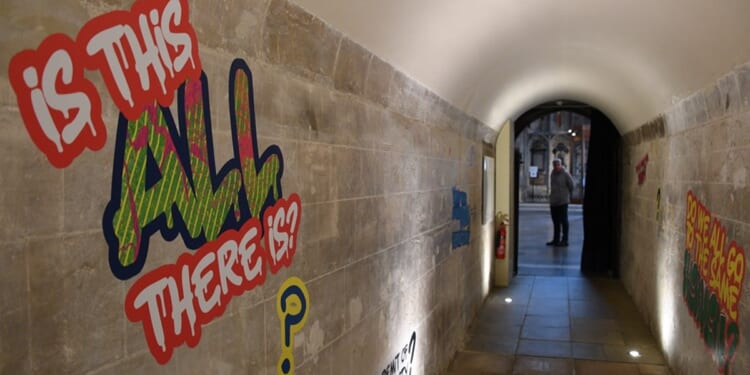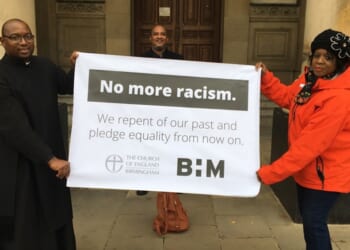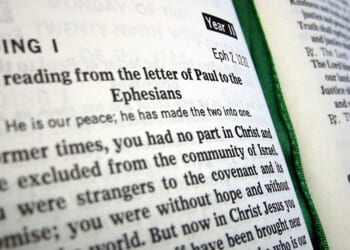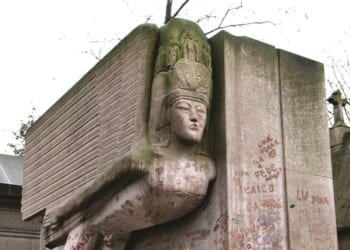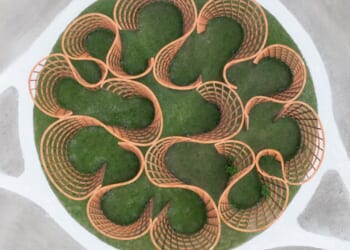JUDGING by the photographs, as everyone seems to have done, the fake graffiti in Canterbury Cathedral are hideous and very obtrusive. Hideous they will always be, but no one seems to have gone in person to discover how much they destroy the experience of the rest of the cathedral. This may not matter much. In today’s world, pictures trump words, and images are much more important than the earthly artefacts that they transform into symbols.
There is absolutely no reason for a Christian shrine to be aesthetically rewarding. The cathedral in Cestochowa, which has Poland’s most sacred icon, the Black Madonna, lives in my memory as a mountain of kitsch. Those American megachurches where the flag is ten time the size of the altar can no more lift the spirit by their architecture than a convention centre in a big hotel.
But the medieval cathedrals of Western Europe are not like that. They do their work when they are empty and silent. Even Ridley Walker, in Russell Hoban’s post-apocalyptic account, feels this when he stumbles into the crypt that is all that remains of Canterbury Cathedral: “Stoan branches holding up the over head and growt in to it. Stoan branches unner a stoan sky. A stoan wood unner the groun the hart of the wood in the hart of the stoan in the woom of her what has her woom in Cambry. I fel down on to my knees then I cudnt stan up I cudnt lif up my head.”
The most serious attack on the exhibition came on the Spectator website from Dr Bijan Omrani, who took its defences seriously and demolished them one by one, concluding: “The Canterbury graffiti . . . does not teach. It poses questions which, at best, are the proper province of prayer and debate. . . It brings to mind not the beauty of holiness, but a urine-sodden Zone 3 underpass.” Zone 3! I’m sure that Spectator readers will have heard of it, though few have ever ventured there, and fewer still returned.
But these are only vinyl stickers, and they will be peeled away in months. Cathedrals have survived greater outrages: they’ve been used as stables, had the faces chiselled off their statues, and, in the case of Lichfield, made into arenas for animal torture, when Cromwell’s troopers released cats to be chased and torn apart by dogs.
What I really found depressing about the story was the way in which it illustrated the transformation of Britain into a fully owned subsidiary of the American entertainment industry. Once J. D. Vance had picked the story up on X, the whole thing moved into wonderland. It really is difficult to take seriously the Christianity of American billionaires. Peter Thiel, for example, the man who funded Mr Vance, gave a series of lectures last year in which he argued that, while Bill Gates was a “very, very awful person”, he was “not remotely able to be the Antichrist”. That would have to be Greta Thunberg, or the AI sceptic Eliezer Yudkowski.
Still, I think that there is a serious criticism behind the right-wing sniping at “elites”. Even if you take seriously the idea that the graffiti express the questions about God of people who would never come into church, it remains an exhibition about them, not something that they have themselves made. It was a spectacle for visitors before it became a spectacle for the whole world.
Any serious answer to these questions cannot be another slogan that could be written out in spray paint. It cannot, in fact, be made of words at all. A cathedral without gimmicks can point towards an answer, as it did for Ridley Walker. Art can assert convincingly that the answer exists, even if it cannot be expressed. But, most of all, this is something that is shown in actions and in relationships.
The sociologist Henry Farrell, raised an Irish Roman Catholic, has an interesting essay up on his Substack on the strength of American Evangelical churches, in which he argues that it is their small-group networks which make them strong, and that the Left needs to learn from this. The spectacle up front does not ultimately matter: it is the communities in the pews which give the churches strength.
This is a hard road for English cathedrals to follow, no matter how much they want to, because so much of their fund-raising depends on tourism, which is just spectacle incarnate. In the end, if those graffiti draw more visitors to Canterbury, they will have done their work.

